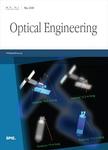版权所有:内蒙古大学图书馆 技术提供:维普资讯• 智图
内蒙古自治区呼和浩特市赛罕区大学西街235号 邮编: 010021

作者机构:Punjabi Univ Dept Elect & Commun Engn Patiala Punjab India
出 版 物:《OPTICAL ENGINEERING》 (光学工程)
年 卷 期:2018年第57卷第11期
页 面:116102-116102页
核心收录:
学科分类:08[工学] 080401[工学-精密仪器及机械] 0804[工学-仪器科学与技术] 081102[工学-检测技术与自动化装置] 0811[工学-控制科学与工程] 0702[理学-物理学]
主 题:spectral amplitude coding optical code division multiple access multiple access interference enhanced double weight code multidiagonal code modified double weight code Walsh-Hadamard code pulse width broadening
摘 要:The focus of this work is to consolidate a review of accomplished research in the field of optical code division multiple accesses (OCDMA), to outline the state-of-the-art comparison, and to recognize the prominent trends as well as limitations. Code division multiple access (CDMA) has prospered as a vital solution for numerous applications such as cellular mobile communication-based wireless network technology and wired/wireless local area networks that include areas of unlicensed industry, medicine, and science. Due to the commercial utilization of the various advantages of CDMA, it has raised the matter of whether optical technology reliant communications provide the noteworthy advantages to optical networks as well as what are the technologies that facilitate optical chip-based (code division) networks. Aforementioned matter has been addressed in the context of the incorporation of OCDMA in the systems through several experiments of laboratory-based test-bed investigations, field trials, and simulation analysis of multiple users in the recent research works. The performance of OCDMA has an edge over wavelength division multiplexing and offers an unmatched capacity that is seen through simulations. To cater the explosive expansions in internet application, different spectral amplitude codes have been proposed till now. We present a review of the different spectral amplitude codes based on the reported works in spectral amplitude code OCDMA systems. For the purpose of state-of-the-art comparison, parameters considered are data speeds, advanced modulation formats, bit error rate, extinction ratio, decision algorithms, photonic efficiencies of photodetectors, frequency bands, signal-to-noise ratio, forward error correction, photodetector noises, etc., and simulations are carried out in similar input environments. We explore the advantages/limitations of the spectral amplitude codes, recent progress in the technology, practical works on spectral amplitude coding (SAC